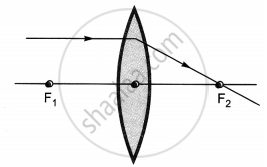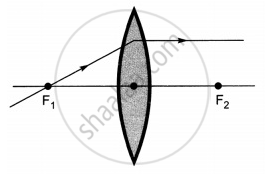Advertisements
Advertisements
Question
A person finds difficulty in seeing nearby objects clearly. His vision can be corrected by using spectacles containing:
(a) converging lenses
(b) diverging lenses
(c) prismatic lenses
(d) chromatic lenses
Solution
converging lenses
Converging lenses are used to correct the defect of vision and enable the person to see nearby objects clearly.
APPEARS IN
RELATED QUESTIONS
Where must the object be placed for the image formed by a converging lens to be:
real, inverted and same size as the object?
Where must the object be placed for the image formed by a converging lens to be:
virtual, upright and larger than the object?
An object lies at a distance of 2f from a concave lens of focal length f. Draw a ray-diagram to illustrate the image formation.
How would a pencil look like if you saw it through
a concave lens Is the image real or virtual?
Calculate the image distance for an object of height 12 mm at a distance of 0.20 m from a concave lens of focal length 0.30 m, and state the nature and size of the image.
State whether the following statement is true or false:
Short-sightedness can be cured by using a concave lens.
- Name the lens which always forms an erect and virtual image.
- State whether the image in part (a) is magnified or diminished.
A lens forms an upright and diminished image of an object irrespective of its position. What kind of lens is this?
At what distance from a concave lens of focal length 20 cm a 6 cm tall object be placed so as to obtain its image at 15 cm from the lens? Also calculate the size of the image formed.
Draw a ray diagram to justify your answer for the above situation and label it.
The diagrams showing the correct path of the ray after passing through the lens are:
 |
 |
| I | II |
 |
 |
| III | IV |
